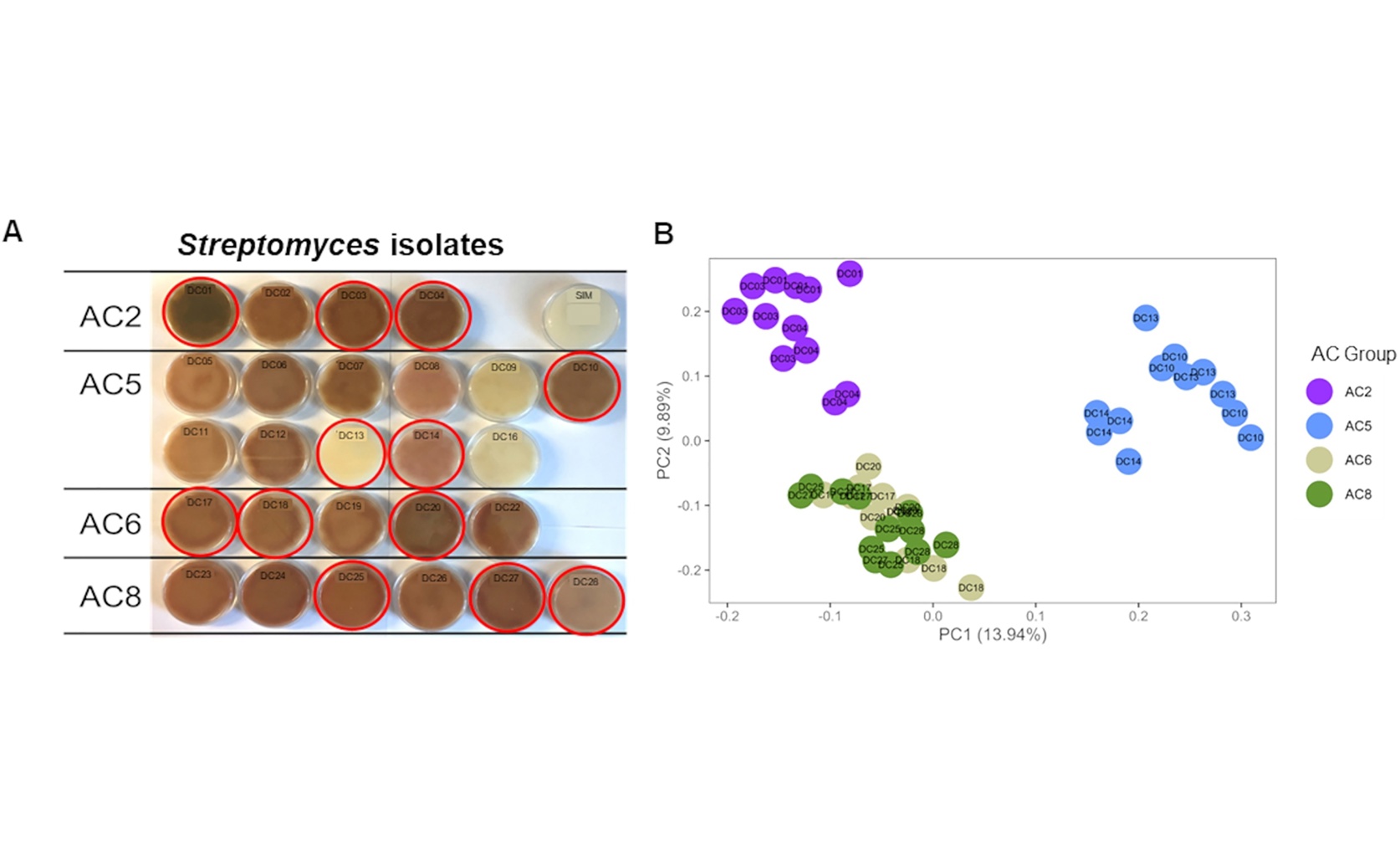We’re thrilled to announce the winners of the Marvel Rivals S4.5 Livestream Incentive Event!
Congratulations to all the winners — your dynamic streams shone brightly amid the dark battles, inspiring players across the…

We’re thrilled to announce the winners of the Marvel Rivals S4.5 Livestream Incentive Event!
Congratulations to all the winners — your dynamic streams shone brightly amid the dark battles, inspiring players across the…

NEW YORK, Nov 27 (Reuters) – A U.S. military plane soared over Florida’s Eglin Air Force Base earlier this month and released a drone made by the defense tech giant Anduril Industries to test whether it could take flight and conduct surveillance.
The drone – a winged model known as Altius – nosedived 8,000 feet into the ground, according to an Air Force test summary, reported here for the first time. Shortly afterwards, a second Altius drone spiraled to earth during a separate test, the summary said.
Sign up here.
Anduril has described its Altius drone, which can be used for surveillance and carry munitions, as battle-ready and says it has sent hundreds to Ukraine since Russia’s full-scale invasion started in 2022. The company says Altius can launch from ground, air, or sea and, depending on the model, offer long-range strike capabilities or the ability to fly for hours.
But the previously undisclosed failure of the two Altius drones during the Air Force tests this month, as well as setbacks for Anduril’s Ghost drone program – including in Ukraine – highlight a gap between the U.S. company’s claims of battlefield readiness and the performance of some of its drones in testing and combat, according to interviews with more than a dozen people, including former Anduril staff, military officials, and people working with drones on the Ukrainian battlefield.
Western drone makers, including Anduril, have had limited impact so far on the battlefield in Ukraine. Mykhailo Fedorov, a deputy prime minister of Ukraine, said on Telegram in November 2024 that of one million drones deployed to the front lines that year, 96% were Ukrainian-made.
Shannon Prior, an Anduril spokesperson, said the incidents documented by Reuters are “isolated examples” across hundreds of tests.
“We are constantly proving out new capabilities for all of our systems, pushing them to the limit so that we can learn, iterate, and improve our systems,” she said. “Test failures are a natural – and intentional – part of that process.”
Prior added the Altius has previously flown “more than 2,000 hours” in tests, demonstrations and deployments, without providing details of what the results of those tests were.
Reuters could not determine how many Altius test flights have resulted in failures.
After the news agency contacted Anduril for comment, the company posted a blog detailing testing issues related to the Altius and Ghost drones, in addition to its command and control software, Lattice. “Those failures, and the learning they afford, are an essential and unavoidable part of the development process,” the company said.
A spokesperson for the Air Force Special Operations Command confirmed the Altius demonstration occurred this month but declined to comment further.
The Armed Forces of Ukraine declined to comment on the performance of Anduril’s equipment, saying the effectiveness of weapons and military technology is restricted information, citing laws covering state secrets.
Anduril has a rapidly growing portfolio of weapons systems in development, spanning an autonomous warship it is co-developing with Hyundai to the “Fury,” a large drone designed to fly alongside manned fighter jets.
“We’re going to move fast, build what works and get it into the hands of the people who need it,” Luckey said during a speech in Taiwan this summer.
The Pentagon didn’t respond to a comment request.
The war in Ukraine has provided an opportunity for the company to battle-test and promote its products as it looks to boost its business with the Pentagon and with Taiwan.
The company sent about 40 models of its Ghost drone, which looks like a miniature helicopter and can be used for reconnaissance, to Ukraine early in the conflict that began in 2022, according to a source with direct knowledge of the matter.
But the initial model struggled to withstand Russian electronic warfare, frustrating Ukrainian soldiers, according to four people familiar with the matter. The person with direct knowledge of the matter said the company misunderstood how both terrain and Russia’s jamming of satellite-based navigation systems could derail flight plans.
Anduril spokesperson Prior said “everyone was having problems” with jamming from the outset of the war. She said that Anduril’s “teams work side by side with end users every day to capture feedback, push software updates in real time, and adapt systems under combat conditions.”
Prior said an updated model, the Ghost X, was delivered to the frontlines in Ukraine in December 2023 and “proved that the lessons learned earlier in the year were addressed.”
But the Ghost X has also had issues in more recent tests. A video shared with Reuters and separately posted in January 2025 on US ArmyWTF, an Instagram account run by an Army veteran, showed a Ghost model spinning out of control before crash landing near soldiers in an unidentified location.
“I told you this would be a clusterfuck,” said one unidentified person in the video.
Reuters verified the footage as having been recorded during a weeks-long U.S. Army exercise in Hohenfels, Germany that began in mid-January, and included use of the Ghost X.
Anduril said the incident occurred due to an issue with a rotor and said it was fixed.
Major Geoffrey Carmichael, a spokesperson for the U.S. Army’s 10th Mountain Division that was involved in the exercise, said that when units are experimenting with new technologies such as drones “hard landings, system failures, and weather-related impacts can occur.”
Of the Ghost X specifically, Carmichael said the drone “demonstrated strong performance in cold, high-altitude, and hot-weather environments” but that units identified areas for improvement, “particularly power management in extreme cold.”
Anduril, in its blog post, said U.S. Army units had “consistently praised” the reliability of Ghost X.
Anduril initially sent about 100 Altius drones to Ukraine in 2023, according to two sources. In March of this year, the UK Ministry of Defence announced a £30 million (about $40 million) contract paid for by a UK-led international fund to send an undisclosed number of Altius drones to Ukraine.
Britain’s Defense Ministry told Reuters the deal was to provide advanced Altius drones to Ukraine to tackle Russian aggression in the Black Sea. It said the Altius drones were recently delivered to the Ukrainian Navy, “who have expressed their satisfaction with them.”
The Ukrainian Armed Forces didn’t provide further comment.
Anduril told Reuters it has “shipped hundreds of Anduril systems to Ukraine” and that “they’ve proven effective against a large number of high-value enemy assets.”
Reporting by David Jeans in New York, Cassell Bryan-Low in London and Supantha Mukherjee in Stockholm; additional reporting by Tom Balmforth and Milan Pavicic in London and Max Hunder in Kyiv; Editing by Joe Brock and Michael Learmonth
Our Standards: The Thomson Reuters Trust Principles.

Rare earth elements are essential to modern technologies, but global dependence on China’s concentrated supply chain creates significant risks, making it crucial for industries and governments to diversify and strengthen these supply chains for greater security and resilience.
Rare earth elements have become indispensable to the modern economy, underpinning technologies from smartphones and electric vehicles to advanced defence systems and data centres. Despite their name, many rare earths are relatively abundant in the earth’s crust, but their supply chains are among the most highly concentrated and complex globally. This concentration, coupled with recent geopolitical tensions and export controls, has exposed critical vulnerabilities that threaten the stability of many industries and organisations — manifesting as regulatory risks, supply disruptions, and rising operational costs. For organiations that rely on rare earths, either directly or indirectly, the urgent need to diversify and transform their supply chains is clear.
The rare earths supply chain involves multiple intricate processes, including extraction, leaching, thermal cracking, and refining. Each stage requires specialised expertise and infrastructure, making the supply chain capital-intensive and technically challenging. Currently, China controls approximately 70% of global rare earths mining and 85% of refining capacity. This geographic concentration creates a bottleneck, leaving the rest of the world heavily dependent on a single country for these critical materials. For instance, Europe is 98% dependent on China for rare earths, which are needed for hybrid vehicles, fibre optics, and nuclear power, and 97% dependent on China for magnesium, a key material for aerospace and automotive manufacturing.
China’s position is not merely a commercial fact, it is also used as a strategic lever. Often, China’s rare earth policy actions appear to be rooted not so much in the value of the minerals themselves, but more in efforts to advance broader bilateral or multilateral strategic objectives beyond the commodity market. Yet, control over these critical materials gives China significant influence on global supply and pricing. This concentration also means that any disruption — whether due to policy changes, weather events, trade disputes, or environmental regulations — can reverberate across markets worldwide, causing shortages and price volatility.
In recent years, China has used rare earths as a powerful strategic tool. Ongoing trade tensions between the US and China have brought this issue into sharp focus. In 2025, following announcements of US tariffs on Chinese goods and the inclusion of thousands of Chinese companies on an “entity list” restricting their access to US technology, China responded with export controls and strict licensing requirements on several rare earths and the magnets produced from them. It also halted the export of technology and equipment that could enable other countries to develop their own rare earth mines, refineries, and magnet manufacturing facilities.
These export controls rattled markets and disrupted supply chains. European companies faced long delays and sharp price increases due to shortages of raw materials, and some automobile factories faced the possibility of shutdown.
The sectors affected by these controls are broad and critical: energy, automotive, defence, semiconductors, aerospace, industrial motors, and AI data centres all depend heavily on rare earths. The tightening of this supply chain has threatened production schedules, driven up costs, and raised serious concerns about the resilience of vital infrastructure worldwide.
In October 2025, China announced a 12-month suspension of certain export controls on critical minerals to the US and the EU following an agreement between the US and China. Additionally, China will issue general licenses to facilitate the export of critical minerals, such as gallium, germanium, antimony, and graphite, which are essential for the production of semiconductors, electronics, and renewable energy technologies, including electric vehicle batteries. This will likely benefit US end-users and their global suppliers.
Despite this reprieve, companies dependent on Chinese-origin rare earths remain vulnerable to shifting policies.
Given China’s position in rare earths, the US and other countries are seeking ways to reduce their reliance on imported rare earth elements.
For example, governments are incentivising investment in domestic rare earths supply chains, streamlining regulatory approvals, and fostering international partnerships aimed at enhancing competitiveness. The US government announced plans to make direct investments in the rare earths industry and has signed agreements with Japan, Thailand, Malaysia, and Australia to boost mining and processing projects outside of China.
This could present mining companies and those companies reliant on their inputs with multiple opportunities to better secure their supply chains.
However, some analysts caution that these efforts will not immediately alleviate the risks associated with China’s position, given the scale and sophistication of its existing infrastructure. For instance, launching a new mining project is a complex, time-consuming process that can take years to discover, develop, and construct. It requires substantial financial capital, technical know-how, permitting approvals, and robust infrastructure. Government support can be a crucial enabler in providing financing, implementing policy reforms, supporting the development of R&D capabilities, and other mechanisms, while also managing environmental risk and community relations.
Companies are placing increasing importance on supply security and reliability. To navigate today’s volatile landscape, organisations should proactively address their vulnerabilities by:
For mining companies, supply chain resilience may include diversifying mining and refining operations in other regions, such as North America, Australia, Latin America, and Africa, or recycling rare earths to recover valuable materials from waste, reducing the need for primary mining and mitigating environmental impacts.
Platforms like Marsh’s Sentrisk™, combined with specialist risk consulting, empower organisations with deep supply chain intelligence to support more innovative and faster responses. According to Marsh’s Mining Market Update 2025, the insurance industry is also placing greater emphasis on supply chain-linked risks when assessing contingent business interruption coverage. This highlights the growing importance for companies to prioritise mitigation efforts accordingly.
In an era where rare earths are the backbone of critical technologies as well as keys to national and economic security, their secure and sustainable supply is indispensable. Investing in resilience, sustainability, and data-driven supply networks is crucial during this period and beyond.

This story is based on a conversation with Eric Zander-Hussey, also known as EZ. It has been edited for length and clarity.
In 2010, Kolinda and I met at a clown convention, where we were introduced to each other…

Jim Crocker
27th November, 2025
Streptomyces isolates that are indistinguishable by a common genetic marker (V3-V4 16S rRNA) actually exhibit significant…

[SciDev.Net] Researchers have unveiled new AI tools, from smartphone cough analysis to child-friendly screening systems, which could transform how tuberculosis is detected, monitored and prevented.
The innovations, presented at the Union World…

The Daily Mail’s parent company has been warned it could face a credit downgrade if it loads up with debt to fund its £500m takeover of the Telegraph titles.
The US credit ratings agency S&P Global Ratings said Rothermere Continuation Holdings Ltd (RCHL) – the Jersey-based parent company of Lord Rothermere’s assets including the Daily Mail, Mail on Sunday, Metro and the i Paper – had been put on “credit watch” as it seeks to put a funding package in place to table a formal deal in the coming weeks.
“The detail and funding of the transaction remain unclear but, in our view RCHL has limited headroom under our BB- long-term issuer credit rating to accommodate any additional financial debt, considering its limited size and the fact that Telegraph Media Group (TMG) operates in structurally challenged newsprint and advertising markets,” S&P analysts said in the note.
The note said that given the significant valuation of TMG at £500m, compared with RCHL’s “modest size and scale”, S&P believed the transaction might “materially increase its adjusted leverage beyond our threshold”.
On Saturday, Rothermere’s Daily Mail and General Trust (DMGT) announced a £500m deal with RedBird IMI to buy the Telegraph titles. The two parties have entered a period of exclusivity and aim to complete the terms of the transaction swiftly. However, there is significant speculation over how Rothermere will fund the deal.
Most analysts believe that the Telegraph titles are worth about £350m, and DMGT has said that in order to comply with foreign state influence rules, there would be no foreign state investment or capital in its funding structure.
Some observers have speculated that this could still leave open the possibility of funding from foreign sources that are not state-owned or sovereign wealth funds. Two years ago DMGT had been in talks with Qatari investors about backing a bid for the Telegraph group, but later decided against the move.
Rothermere’s businesses, which also include a Middle East-based events operation and property information services in the UK and US, made £1.1bn in revenues and adjusted pre-tax profits of £78m in the year to 30 September 2024.
The consumer media business made revenues of £613m and £53m in adjusted operating profit. The property information division, which includes Trepp in the US and Landmark and Yopa in the UK, reported £219m in revenues and adjusted operating profits of £22m.
The events and exhibition arm – which hosts four of its five biggest events in Abu Dhabi, Dubai, Saudi Arabia and Egypt – saw revenues increase 67% year-on-year to £272m as adjusted operating profits more than doubled to £42m.
after newsletter promotion
Last month, DMGT announced a £906m reorganisation to create a new parent company, RCHL, a move that effectively split DMGT and the non-UK subsidiaries.
RCHL is controlled by a discretionary trust which is held for the benefit of Rothermere and his immediate family.

The Global Virus Network (GVN), a coalition of leading human and animal virologists in more than 40 countries dedicated to advancing pandemic preparedness through research, education and training, and global health solutions, today…

Morgan is out of contract with Ospreys at the end of the 2025-26 season, and previously said he would leave professional rugby in Wales if they fold.
The Welsh Rugby Union (WRU) wants to do away with one of the four regions by keeping just one in…

Consciousness is the strangest thing evolution ever pulled off. It’s not a trait like wings or fur, but rather something that exists solely as a product of the mind. For the longest time, we’ve…